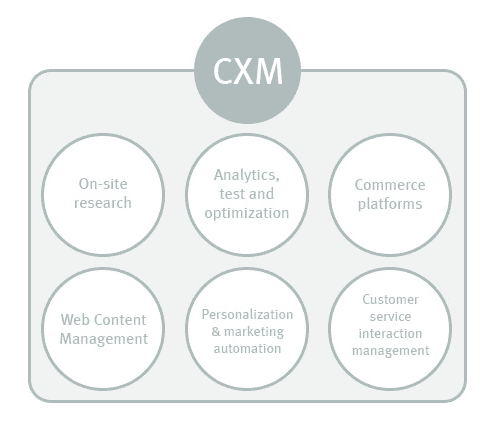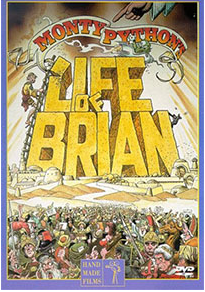CXM vs UX - an introduction
 The children’s TV programme Barney may not be the first place you would think to go to for business advice. But watching an episode last weekend (with my 3 year old cousin I must add) I did start thinking about Customer Experience Management (CXM), the new marketing phrase currently doing the rounds.
The children’s TV programme Barney may not be the first place you would think to go to for business advice. But watching an episode last weekend (with my 3 year old cousin I must add) I did start thinking about Customer Experience Management (CXM), the new marketing phrase currently doing the rounds.
Barney and his cronies were singing a song about how 'everyone is special' and telling the audience 'you’re important' and 'you’re the only one like you'. I sat there with my cousin, (who was by now not sitting but instead jumping on the sofa with excitement) thinking that Barney had inadvertently done what many experts have managed to make a mess of in recent months, and that is define CXM without any marketing hyperbole or ridiculous buzz words.
CXM is essentially understanding that everyone is different and people want companies to recognise this by providing personalised content at all customer touch points. Customers want to be valued by companies.
As a web development agency, we have spent countless hours discussing and implementing effective User Experience Design (UX). UX is concerned with the online environment so in that respect CXM can be considered an evolution of UX due to the multiple touch points.
Since the early 90’s CRM (Customer Relationship Management) was the main focus when it came to understanding one’s target audience. This essentially involved concerted efforts across the sales and marketing teams to capture, store and process as much customer data as possible. These are worthwhile tasks but the customer would be inclined to ask 'what am I getting out of this?'. This is the question that has caused the emergence of CXM.
CXM makes providing a great service to the individual customer central to the company’s ethos as opposed to just capturing data.
The market research company Forrester believe that CXM consists of 6 elements (shown in the diagram below). Each element plays a vital role, as webtrends reported in a recent white paper; 'What good is content if you can’t find it, buy it, or interact with the company, or is poorly designed, difficult to navigate, or simply irrelevant to the customer’s needs?'.

We all salute the almighty CXM Strategy
It may be going a bit too far to get your staff to salute a CXM flag and sing the aforementioned Barney song 'You’re Special' every morning but it is imperative that the whole company embraces CXM and not just the customer service team.
As mentioned previously, at every customer touch-point, such as the call centre, website or store, CXM should be at the forefront of employee’s minds.
In today’s society where customers have an instant and significant voice via social media it is important that CXM strategy be flexible and not rigid because as our friend Barney said 'you are the only one like you' which when adopted by CXM, translates into everyone’s user journey is unique.
Global companies have recognised the importance of CXM and thus embraced it with open arms. Two recent surveys from IBM (2010) and Bloomberg Businessweek (2011) emphasise this point. The IBM survey revealed that 'getting closer to customers' as the #1 priority for CEOs in the next 5 years and Bloomsberg Businessweek reported that 80 percent of the companies polled rated customer experience as a top strategic objective.
Monty Python were on the right track

As a web design and build company we rather predictably are most interested in the Web Content Management (WCM) element of the CXM diagram. In the past, for a WCM strategy to be deemed successful, it was enough to deliver a great site experience by uploading interesting content. Of course there is nothing wrong with this and we would not even want to put an approximation on the number of sites we have seen over the years that do not do it! However, things have moved on.
WCM needs to interact and integrate with other solutions such as search, e-commerce and analytics to ensure that companies can gather customer intelligence to use for target marketing and retention strategies.
The web team and marketing department become intrinsically linked (hey, this is a bit like running Agile internally!) and create business rules which help target customers with personalised content.
Remember that scene in 'Life of Brian' when Brian is addressing his followers:
- Brian: Look, you've got it all wrong! You don't need to follow me. You don't need to follow anybody! You've got to think for yourselves! You're all individuals!
- Crowd: [in unison] Yes! We're all individuals!
- Brian: You're all different!
- Crowd: [in unison] Yes, we are all different!
- Man in crowd: I'm not...
Well, it is worth remembering this scene when building a website (provided your target audience doesn’t consist of customers like the 'Man in the crowd').
At MMT Digital we use a number of different systems to build websites including Kentico EMS which is incredibly efficient in marketing automation which leads to highly targeted personalisation. In short, different people see different content depending on their website behaviour, their purchasing history or their search journey. For example, Kentico EMS will recognise what search terms a user entered into Google and display content accordingly.
It does not take much deliberation to recognise how powerful this can be for a company and MMT Digital have put it to practice on a number of occasions. Recently, we have built a site for a global publisher which remembers what a user has searched for, such as Murder Fiction, via an external search engine, and display books of this genre in certain places on the site throughout the visit.
There is no need to make CXM complicated
You will no doubt hear a lot more about CXM over the coming months. Some vendors seem to think the more complicated they make something sound the more intelligent they appear but we think the exact opposite. If something is straight forward it takes someone lacking either intelligence or knowledge (or both!) to make it sound complicated.
So, should you encounter such a person when researching CXM, just remember what the inadvertent expert marketeer Barney told us; everyone’s special, everyone’s different and everyone is important!

Thanks to Robert Yardy for sharing his advice and opinions in this post. Robert is the Marketing Manager at a Web Development Agency called
MMT Digital. He is passionate about the importance of websites for companies as well as the opportunities and data online marketing can deliver to marketers. You can follow him on
Twitter.






 Thanks to Robert Yardy for sharing his advice and opinions in this post. Robert is the Marketing Manager at a Web Development Agency called
Thanks to Robert Yardy for sharing his advice and opinions in this post. Robert is the Marketing Manager at a Web Development Agency called


